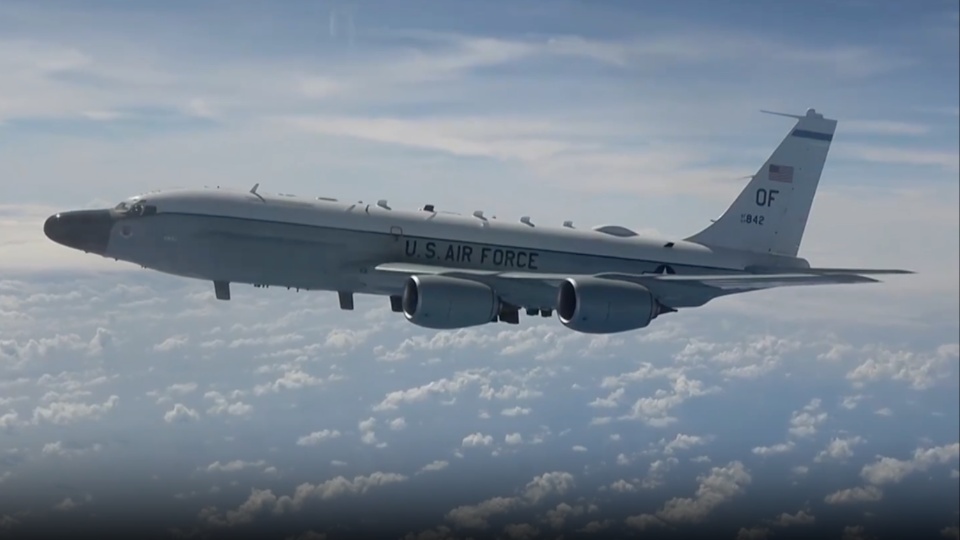
Editor’s Note: There have been an alarming number of encounters between U.S. and Chinese military forces in areas near the mainland Chinese coast and airspace in recent days. The following article details an incident involving a U.S. spy plane flying near a Chinese military exercise in the South China Sea last week. The article was written before another episode this past weekend, which involved a heavily-armed U.S. destroyer and a Canadian frigate sailing through the Taiwan Strait and encountering a Chinese navy ship. The Taiwan Strait is the strip of water between the mainland and Taiwan, an area that China considers its territorial waters. Though the U.S. officially recognizes Taiwan as part of China, it continues to claim the Strait is international waters. These increasingly dangerous U.S. provocations represent an escalation of the new Cold War against China.
On Wednesday, May 31, China strongly rejected the U.S. version of an incident involving planes from the two countries over the South China Sea.
The previous day, the U.S. Indo-Pacific Command had released a video and announced that a Chinese military jet had made an “unnecessarily aggressive maneuver” near a U.S. military aircraft.
The incident, which supposedly took place on May 26, comes at a time of heightened tensions between the two nations.
According to the version presented by the U.S. Military Command, a Chinese J-16 “flew directly in front of the nose” of a U.S. RC-135 over the South China Sea, forcing the U.S. plane to “fly through its wake turbulence.”
The U.S. Command insisted that the RC-135, which is a reconnaissance aircraft or, more simply put, a spy plane, was conducting “safe and routine operations” through international airspace in the South China Sea.
The U.S. released the video of the intercept but did not mention its exact location or distance from the Chinese coast.
It added that the U.S. “will continue to fly, sail and operate—safely and responsibly—wherever international law allows, and the U.S. Indo-Pacific Joint Force will continue to fly in international airspace with due regard for the safety of all vessels and aircraft under international law.”
According to a statement released by the People’s Liberation Army’s (PLA) Southern Theater Command on May 31, the RC-135 was found “intentionally intruding” into the People’s Liberation Army’s training area while the PLA Navy’s Flotilla 17 was conducting a routine exercise in the South China Sea. China also did not indicate the approximate location of the intercept.
According to a report by China’s Global Times, Flotilla 17, an aircraft carrier, later passed through the Taiwan Straits on Saturday, according to defense officials of the government in Taiwan, indicating that the intercept had been much closer to mainland China than what the U.S. indicated.
The report further stated that according to sources from the PLA, as well as open-source intelligence, the RC-135 was very likely flying less than 50km (approx. 31 miles) away from the city of Jieyang in the southern Chinese province of Guangdong.
While Chinese officials have yet to confirm the details of the location, the PLA Southern Theater Command has accused the U.S. of sabotaging peace in the region with its statements over the incident.
“We sternly urge the U.S. to restrict its frontal maritime and aerial forces’ actions and strictly abide by related international laws and relevant agreements, so as to prevent maritime or aerial accidents from happening, or all consequences are for the U.S. to bear,” said Senior Colonel Zhang Nandong.
The statements by the U.S. Indo-Pacific Command were followed by mainstream media reports that also claimed aggression by a Chinese fighter jet, but underplayed key details like the location of the intercept and the fact that the U.S. aircraft in question was a spy plane.
These were only briefly mentioned in reports, which failed to question why a U.S. spy plane was in the South China Sea where the U.S. has neither territory nor any territorial claims.
On the other hand, China, despite its territorial disputes with some of its neighbors in the South China Sea, holds several uncontested territories in the region.
Over the past few years, the U.S. military presence in the South China Sea, supposedly at the behest of its allies in the region, has only provoked the Chinese government and led to heightened tensions.
As per a report by the South China Sea Probing Initiative, in the year 2022, the U.S. sent over 1,000 sorties of large reconnaissance aircraft of various types to the South China Sea.
The U.S.’ increasing military presence in the region has increased the chances of military encounters with China.
Interestingly, parallels can be drawn between this incident and the paranoid reaction by the U.S. over a Chinese high-altitude weather balloon that was blown into U.S. airspace earlier this year.
This article appeared on Peoplesdispatch.org.
We hope you appreciated this article. At People’s World, we believe news and information should be free and accessible to all, but we need your help. Our journalism is free of corporate influence and paywalls because we are totally reader-supported. Only you, our readers and supporters, make this possible. If you enjoy reading People’s World and the stories we bring you, please support our work by donating or becoming a monthly sustainer today. Thank you!












Comments